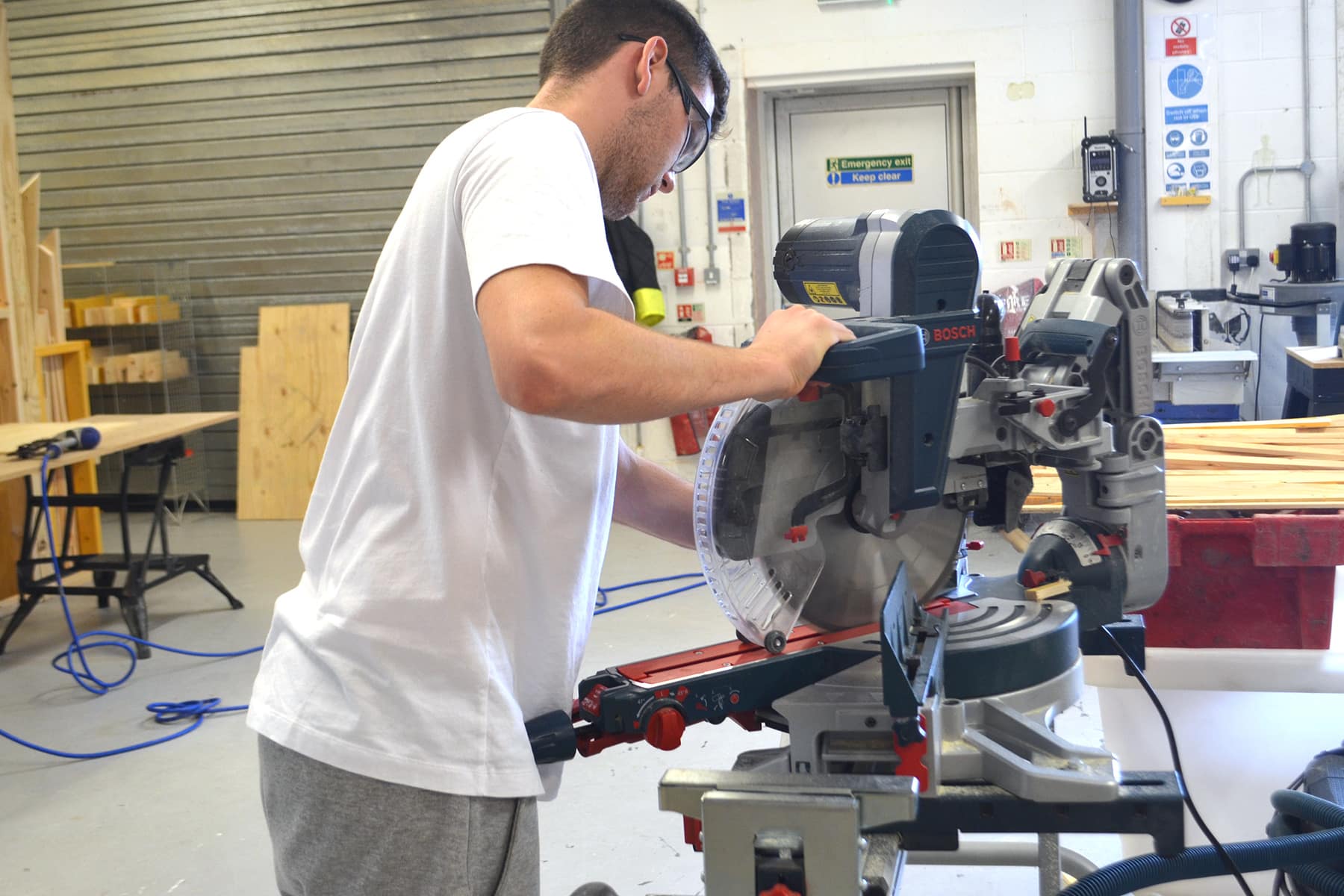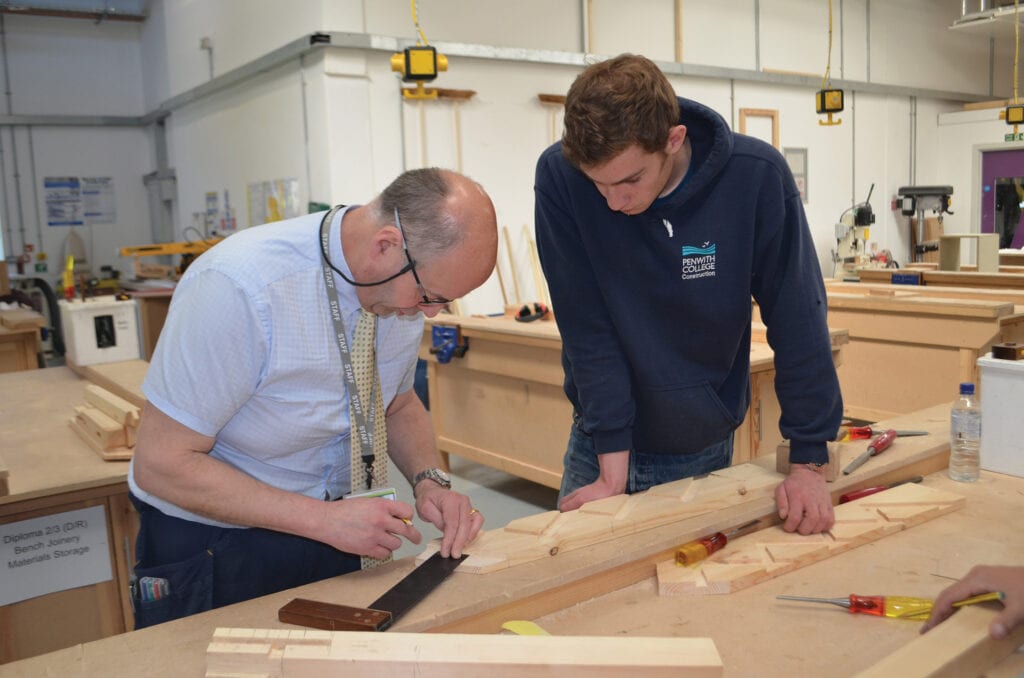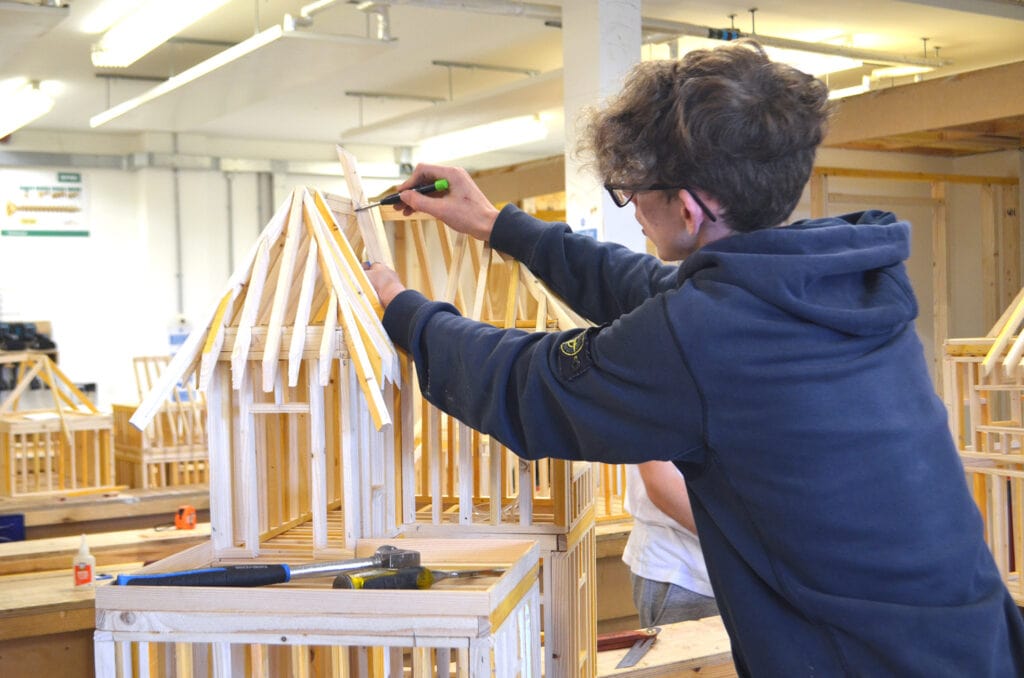New students starting in September: You can find out more about Induction Days and other useful information in our Start of Year Guide.
Why Choose This Course?
This apprenticeship standard is specifically designed for those who have successfully completed the Level 2Apprenticeship. This programme equips apprentices with advanced skills in producing complex building components, such as doors, windows, staircases, and bespoke furniture, using a range of woodworking machines and techniques. Apprentices will work in a workshop setting, collaborating closely with architects, designers, and customers to create high-quality, custom pieces that meet exacting standards and demanding tolerances. This apprenticeship is ideal for individuals looking to deepen their expertise, enhance their craftsmanship, and progress within the construction industry.
Apply for this course
Start date: 20/10/2025
Top Course Highlights
Industry-standard facilities
Highly experienced tutors
Develop skills in line with industry needs
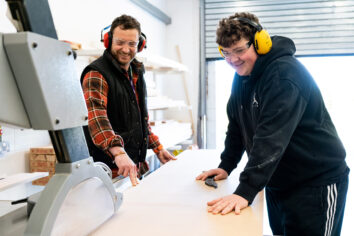
Learn from sector experts
Gain invaluable insights and hands-on experience from industry expert tutors who bring real-world knowledge and expertise to the classroom. Their guidance will help you develop the skills and confidence needed to excel in your chosen field.
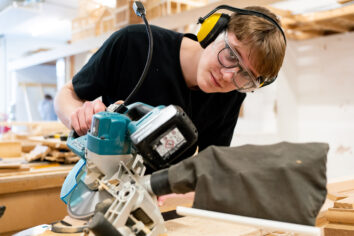
Develop work-related skills
Enhance your practical abilities and gain hands-on experience that directly translates to the workplace. This apprenticeship course focuses on real-world applications, ensuring you are well-prepared to meet the demands of your chosen career.
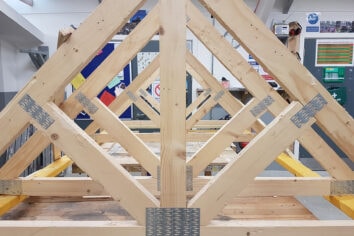
Enjoy professional surroundings
Immerse yourself in a dynamic and supportive environment that mirrors the professional world. This apprenticeship course provides access to state-of-the-art facilities and resources, helping you to thrive and feel confident in your career journey.
What Will I Learn?
Knowledge This apprenticeship will provide apprentices with in-depth knowledge of advanced woodworking techniques and the use of various woodworking machines to produce complex building components such as doors, windows, staircases, and bespoke furniture. They will learn about different types of timber, including hardwoods and softwoods, and their properties. The apprenticeship covers the principles of setting out and marking out for precision work, as well as the importance of working to high standards and demanding tolerances. Apprentices will also understand health and safety regulations, environmental considerations, and the importance of effective communication and collaboration with architects, designers, and customers to meet project specifications and client expectations.
Skills This apprenticeship develops advanced skills in setting out, marking out, and producing complex building components such as doors, windows, staircases, and bespoke furniture. They will learn to use a variety of woodworking machines and hand tools with precision, ensuring high standards and demanding tolerances. The apprenticeship covers techniques for measuring, cutting, fitting, splicing, finishing, positioning, and securing components. Apprentices will also refine their ability to interpret technical drawings and specifications, work collaboratively with architects, designers, and customers, and adhere to health and safety regulations. These skills will enable apprentices to produce high-quality, custom joinery pieces and contribute effectively to architectural projects.
Behaviours Apprentices will demonstrate a strong work ethic, attention to detail, and a commitment to safety, quality, and continuous improvement, while effectively collaborating with colleagues and clients to achieve project goals.
Typical Duties that an Apprentice will carry out in the workplace:
- Setting out and marking out: Preparing and marking materials for complex architectural joinery products such as doors, windows, staircases (straight and with turns), and bespoke furniture.
- Manufacturing building components: Using advanced woodworking machines and hand tools to produce high-quality, custom joinery pieces with demanding tolerances.
- Collaborating with other professionals: Working closely with architects, designers, and clients to meet project specifications and client expectations.
Where Will It Take Me?
Completing the Craft Architectural Joiner Apprenticeship opens up several exciting career opportunities. Apprentices can progress to roles such as Senior Architectural Joiner, Workshop Supervisor, or Project Manager within joinery and construction firms. This apprenticeship also provides a strong foundation for those interested in starting their own business or working on high-profile architectural projects.
Assessment Arrangements
The End-Point Assessment (EPA) is a crucial component of apprenticeship standards, designed to evaluate an apprentice’s knowledge, skills, and behaviours (KSBs) acquired during their training. The EPA typically includes a combination of practical assessments, professional discussions, and portfolio reviews, ensuring apprentices are fully prepared for their chosen career. This assessment is carried out independently by an End-Point Assessment Organisation (EPAO), ensuring impartiality and fairness. Employers play a key role in confirming readiness for the EPA, supporting apprentices throughout the process to achieve successful outcomes.
EPA (End Point Assessment) methods
- Multiple Choice Knowledge Test
- Practical Skills Assessment with Questions
- Professional Discussion (Interview) underpinned by a Portfolio of Evidence
Entry Requirements
Grade 3 GCSE (D) in English and Maths.
Additional Information
We provide all of the tools and materials for the course, however you will be responsible for your own PPE and will be required to come equipped with a pair of steel toe capped boots and a pair of safety glasses.
Meet the staff, tour the campus and find out about life as a student at one of the best colleges in the country.
